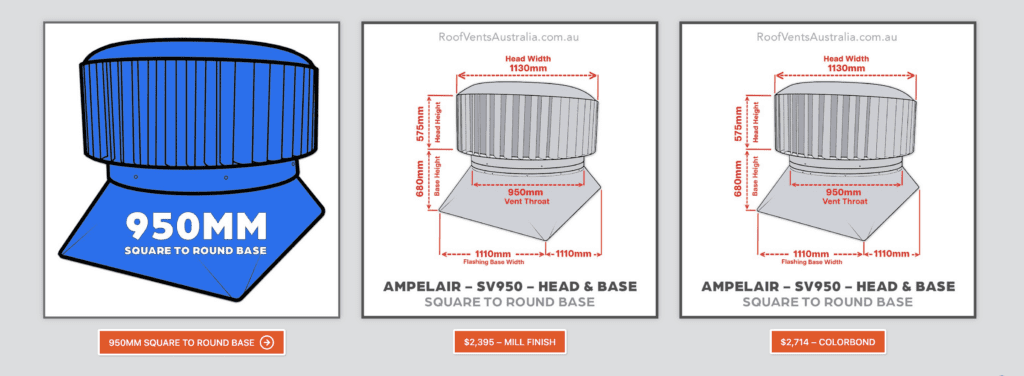Enhancing Indoor Environment Quality: A Comprehensive Guide for Australian Residents


Whirlybird Roof Vents Installation packages Greater Sydney Area – Click Here >
Gutter Sumps to the Trade Shipped Free Australia Wide – Click Here >
Rain Heads to the Trade Shipped Free Australia Wide – Click Here >
Dambuster Rain Heads Shipped Free Australia Wide – Click Here >
Eco-Friendly Roofing Insulation Shipped Free – Click Here >
In the current epoch where the focus primarily lies on enriching customer service experience, it is imperative to highlight the various facets pertaining to building construction and maintenance in Australia, specifically for those residing in or around Coffs Harbour, Darwin, Wollongong, and Geelong. This extensive article seeks to be a reliable compendium for individuals aiming to improve their indoor environmental quality while discerning the imperative regulations and potential energy savings.
Navigating Through Local Building Permits
Before initiating any construction or renovation project, it is crucial to acquire relevant local building permits. These legal permissions ensure that the project adheres to the safety, zoning, and sustainability standards set by the Australian government. To obtain a permit in Coffs Harbour, for instance, one should consult the Coffs Harbour City Council. This proactive approach not only safeguards you against legal repercussions but also enhances the customer service experience by facilitating a smooth construction process.
Emphasis on Building Orientation and Ventilation
Building orientation is a pivotal aspect often overlooked. A strategically oriented structure optimises natural light usage, consequently leading to significant energy savings. It’s crucial to understand the local climate, and solar path, thereby designing the building in a manner that it leverages the environmental conditions to the maximum.
Warehouse ventilation in Coffs Harbour, like in any other geographic locale, demands meticulous planning and execution. A well-ventilated space is vital for maintaining indoor air quality, preventing microbial growth, and ensuring a comfortable environment for the occupants. Moreover, adequate ventilation mitigates the risks associated with indoor pollution.
Understanding Ventilation Systems: A Comparison
Considering Australia’s diverse climatic conditions, let’s evaluate various ventilation systems for residential and commercial applications.
Smokers’ Roof-Mounted Exhaust Fan in Darwin: For establishments in Darwin where smoking is permissible, installing a smokers’ roof-mounted exhaust fan is indispensable. These systems efficiently expel smoke, ensuring a breathable atmosphere for non-smokers.
Roof-Mounted Exhaust Fans in Wollongong: Industries and residents in Wollongong can immensely benefit from roof-mounted exhaust fans, contributing to energy savings and indoor air purification. These fans are designed to expel hot air, facilitating a circulation of fresh, cool air.
Residential Roof-Mounted Ventilators in Geelong: For the residents of Geelong, residential roof-mounted ventilators offer an efficient solution for maintaining optimal indoor conditions. These systems are adept at preventing inadequate mixing of air, limiting the growth of microbes, and providing substantial energy savings.
Commercial Roof Extractor Fan Installation: Commercial establishments should consider installing roof extractor fans to improve ventilation, which directly impacts the occupants’ health and productivity.
Before settling on a ventilation system, it is wise to consider factors like energy consumption, control limitations, and installation requirements. Often, the initial investment in advanced systems leads to long-term benefits, including energy savings and low maintenance costs.
Natural Is Always Better, But Is It Always Feasible?
While natural ventilation systems are ideal for promoting air circulation without energy consumption, their efficacy is often contingent on external conditions, building design, and occupancy type. It is advisable to integrate natural systems with mechanical counterparts to achieve an optimal indoor environment, controlling pollutants and facilitating adequate air mixing.
Monitoring Indoor Conditions with CO2 Sensors
In regions like Coffs Harbour, installing CO2 sensors is instrumental for monitoring indoor air quality. These sensors provide real-time data on carbon dioxide levels, allowing for timely intervention to prevent health risks associated with poor air quality. Interested readers can delve deeper into the specifications and applications of these sensors through retailers and manufacturers in the Coffs Harbour area.
Reducing Costs Without Compromising Quality
When planning a construction or renovation project, it’s essential to consider various cost factors, including shipping costs for materials and equipment. Australians can explore various shipping options, comparing prices and delivery times to select the most suitable service. Some suppliers offer shopping discounts for bulk purchases, which can significantly reduce the project’s overall cost.
Conclusion
This comprehensive guide seeks to equip Australian residents with the knowledge required for making informed decisions regarding building orientation, ventilation systems, and indoor environmental quality improvement. Adherence to local building permits, understanding the nuances of ventilation systems in different regions, and leveraging available resources for cost reduction are pivotal for a successful and compliant construction project. Before embarking on a project, it is recommended to consult with professionals and experts in the field, ensuring that the chosen solutions align with the specific needs and conditions of the geographic locale.
